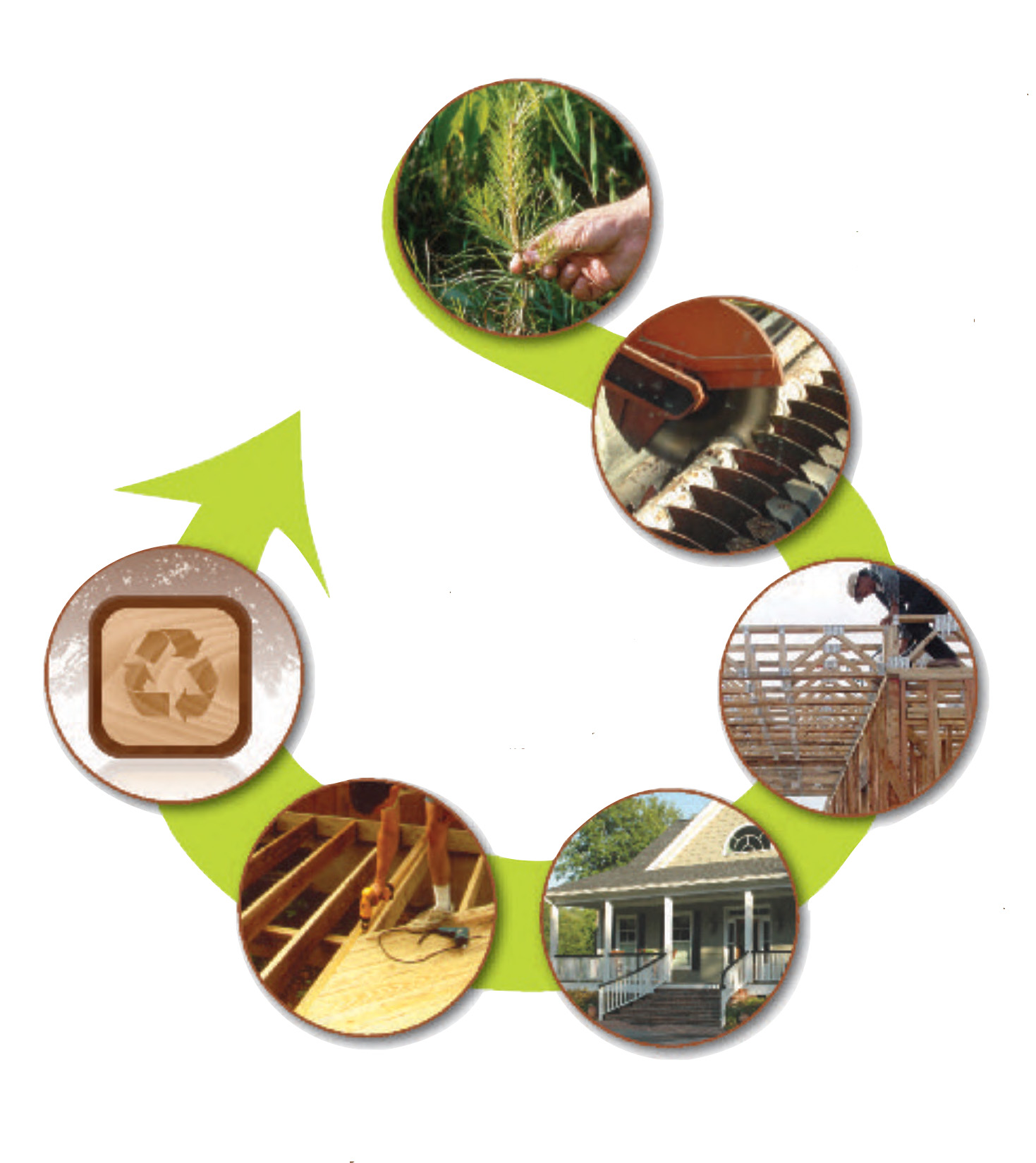Wood, including Southern Pine, is the only mainstream building material to have third-party certification in place to verify it is sourced from sustainably managed resources, ranking it as a top sustainable building material. Initially launched to combat tropical deforestation, certification strategies have become popular tools for forest products companies to promote social responsibility, environmental stewardship, and the sustainability of forest products.
Southern Pine forests, specifically, are some of the most productive and sustainable timberlands in the world, capturing large amounts of carbon from the air and storing it in lumber used every day. And, fun fact, more trees are planted than harvested each year!
Why Is Southern Pine So Sustainable?
Southern Pine products require less energy to manufacture, meaning fewer greenhouse gases, like carbon dioxide (CO2). Trees use CO2 to grow, changing greenhouse gases into the building blocks we know as wood. That’s why wood products are increasingly being recognized as tools to combat climate change.
The Low Carbon Solution
- Forests are carbon sinks: Second only to the oceans, our forests are the world’s most important carbon sinks. Each tree absorbs around one tonne of carbon dioxide and produces around three-quarters of a tonne of oxygen for every cubic metre’s growth.
- Managed forests are more efficient carbon sinks: Immature trees grow fast and absorb CO2 efficiently. As they mature, their rate of growth and CO2 absorption slows, until eventually the tree dies, rots, and releases the carbon it has stored into the atmosphere. In managed forests, mature trees are harvested and replaced with vigorous young trees. A good market for wood products provides the financial incentive for forest owners to invest for the future.
- Wood products are carbon stores: When a tree is harvested, much of its carbon is stored in the product it has been used to make. Because the harvested tree has been replaced, the carbon stored in the wood product is a bonus, which is why wood products are often said to be “carbon negative.” Wood products are 50% carbon by weight.
- The carbon benefit can be extended: Different wood products have different life spans, but the durability of wood means timber used in construction can last a lifetime and longer. At the end of their life, wood products can be recycled or used as biomass fuel.
Learn more fun facts about wood and the environment by clicking here.?
Sustainability Lifecycle
- Sustainable Resources: Wood products are produced from trees, a naturally renewable resource that only need water and sunlight, both naturally produced and free resources, to grow.
- Responsible Manufacturing: Waste is virtually eliminated when trees are used to make wood products. Bark, trims, and sawdust are used as an energy source to help power wood production facilities. It takes far less energy and fossil fuels to produce wood products than to manufacture concrete and steel.
- Quality Construction: As a building material, wood offers a unique combination of benefits, including strength, affordability, ease-of-use, and environmental superiority.
- Long Service Life: The durability of wood products contributes to the long life of a home. Wood products also store carbon, reducing the amount of carbon in the atmosphere.
- Renovation Upgrade: The flexibility of wood makes renovating a home easy and affordable. Wood is builder-friendly, as well as environmentally friendly. Wood also enhances the aesthetic value of a home when used as flooring, cabinetry, furniture, and molding.
- Recycle & Renew: At the end of their initial service life, wood products are easily recycled for other uses. Wood contributes fewer greenhouse gas emissions than nonrenewable steel and concrete.
Need more reasons to make the smart climate choice and use Southern Pine in your next project? Check out these lifecycle assessments in our Southern Pine Lumber Library:
- LCA Report – Treated Framing Lumber vs. Galvanized Steel
- LCA Report – Treated Lumber vs. Composite Decking
- LCA Report – Treated Wood Highway Guardrail Posts vs. Galvanized Steel
- LCA Report – Treated Wood Marine Piling vs. Concrete, Steel & Plastic
- LCA Report – Treated Wood Railroad Ties vs. Concrete & Composite
-
LCA Report – Treated Wood Utility Poles vs. Concrete, Steel & Composite
